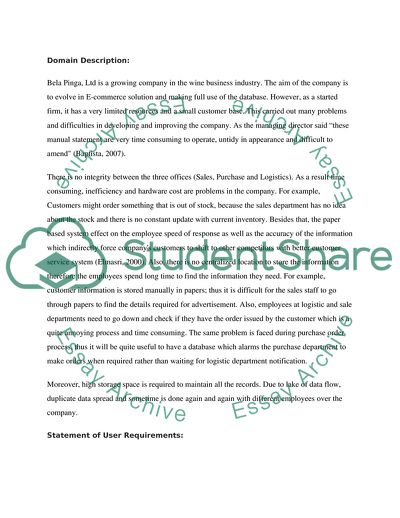Cite this document
(Database Design Activities of Bela Pinga Ltd Case Study, n.d.)
Database Design Activities of Bela Pinga Ltd Case Study. Retrieved from https://studentshare.org/design-technology/1727298-bela-pinga-ltd
Database Design Activities of Bela Pinga Ltd Case Study. Retrieved from https://studentshare.org/design-technology/1727298-bela-pinga-ltd
(Database Design Activities of Bela Pinga Ltd Case Study)
Database Design Activities of Bela Pinga Ltd Case Study. https://studentshare.org/design-technology/1727298-bela-pinga-ltd.
Database Design Activities of Bela Pinga Ltd Case Study. https://studentshare.org/design-technology/1727298-bela-pinga-ltd.
“Database Design Activities of Bela Pinga Ltd Case Study”, n.d. https://studentshare.org/design-technology/1727298-bela-pinga-ltd.


